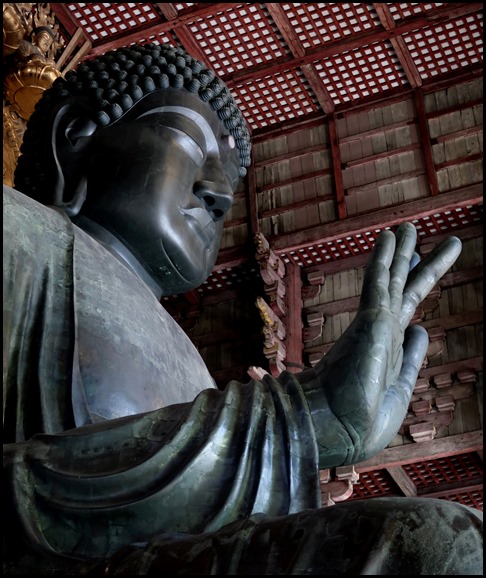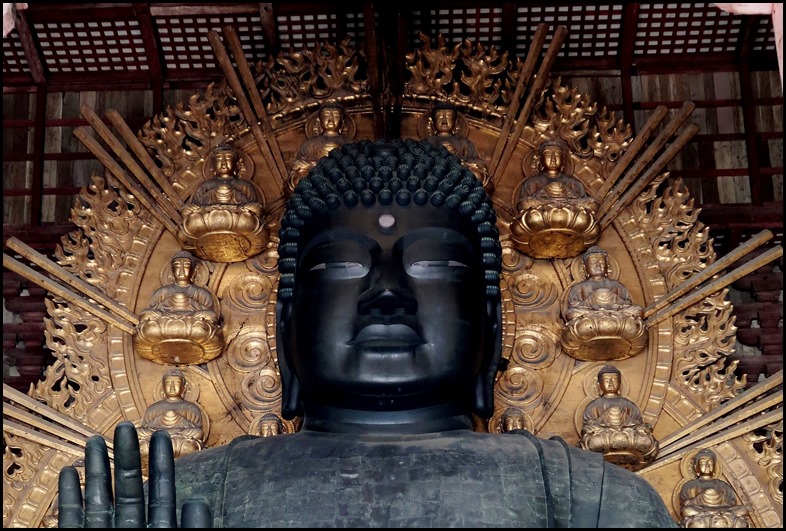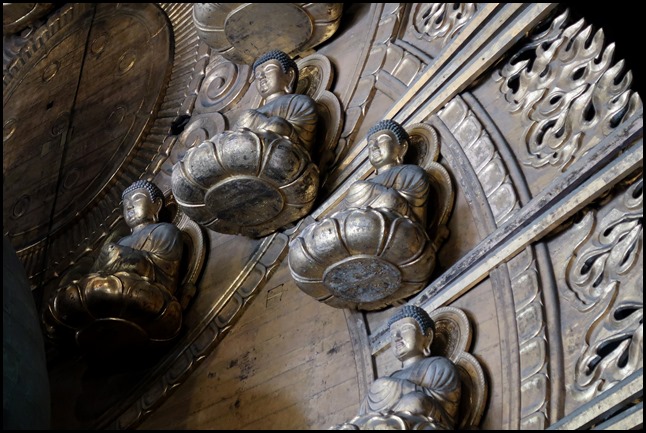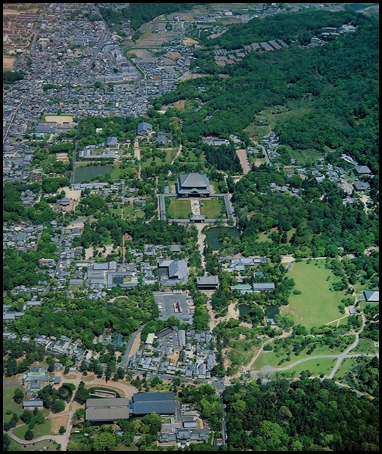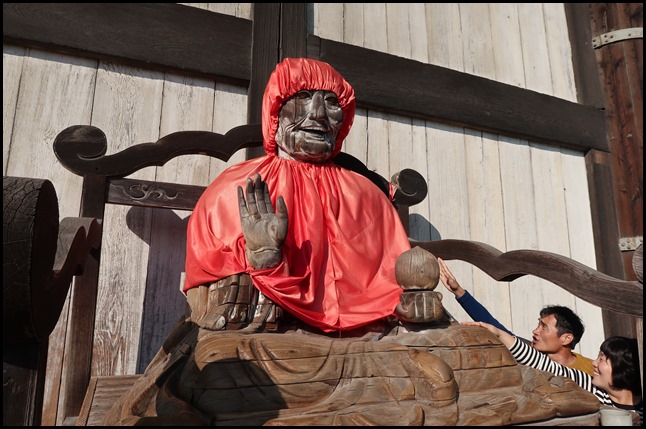Big Buddha -How Big ??

|
How Big is the Big Buddha ???
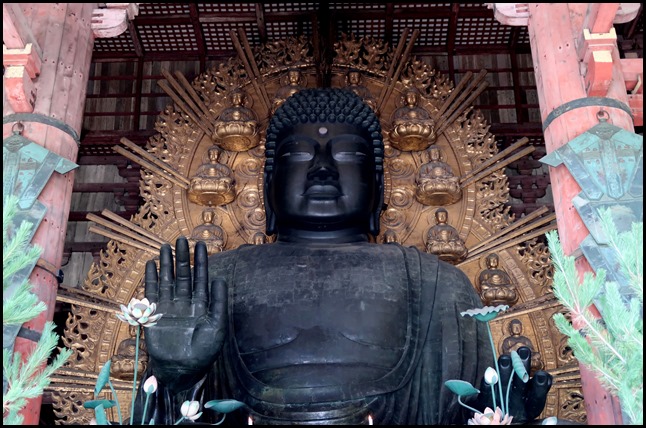 Having walked in to the Big Boy’s
shed (well, actually a magnificent hangar), you look up. There he is. You already know you are going to see the biggest bronze-gilt Buddha in the world but without getting
Bear in for perspective..............
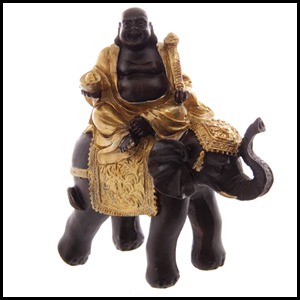  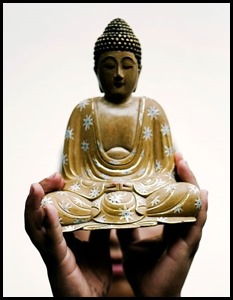 ........our ‘big boy’ alone, from the
first picture compares no bigger visually speaking, with this huggy key ring, desktop candle or hand-held Buddha. I need to prove, other than statistics
that he really is huge. Bear must be used. Mmmm.
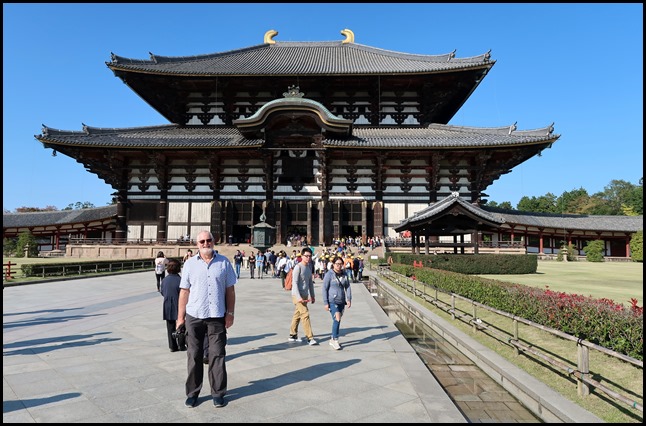 Utilising Bear in
front of the shed, hangar – well one of the world’s largest wooden
structures, still doesn’t give the feeling of ‘hugeness’ unless you look at the
people in the doorway who look particularly diddy.
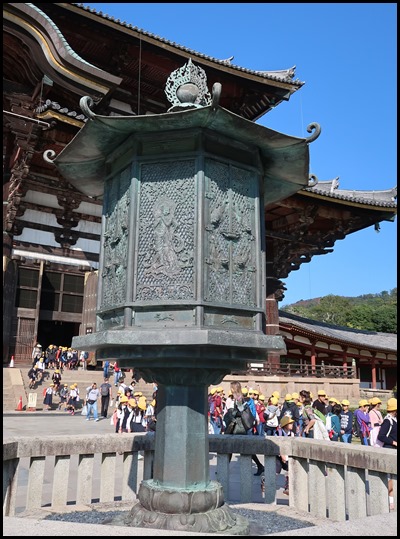
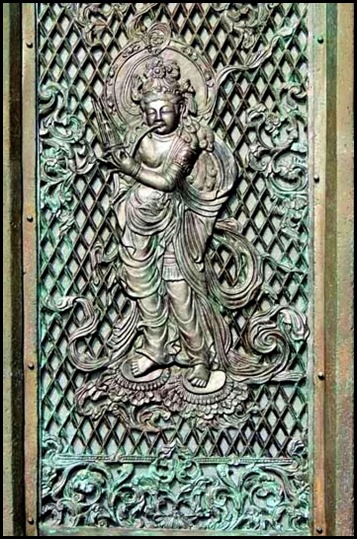 We pass the gorgeous 8th century
lantern.
 We swirl incense over ourselves which impressed the
locals.
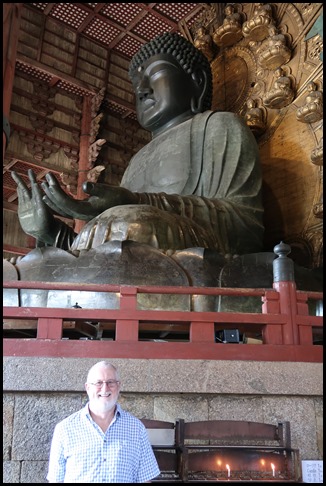 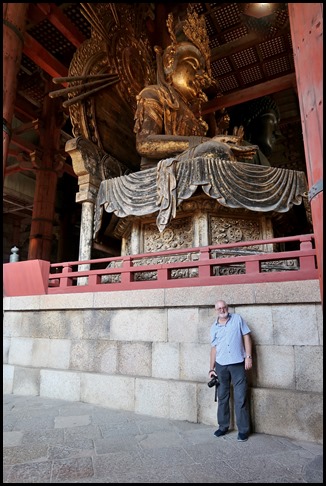 Bear standing under Big Boy didn’t
make Buddha seem massive, it looked much more in perspective when he stood under
Buddha’s right hand friend – Kokūzō-bosatsu.
Kokūzō is especially important to Japan’s Shingon sect
of Esoteric
Buddhism symbolises the "vast and boundless" Buddha wisdom that
permeates the universe. In Japan, believers pray to Kokūzō to grant them wisdom
on their quest toward enlightenment. They also pray to Kokūzō to improve their
memory, technical skills, and artistic talents.
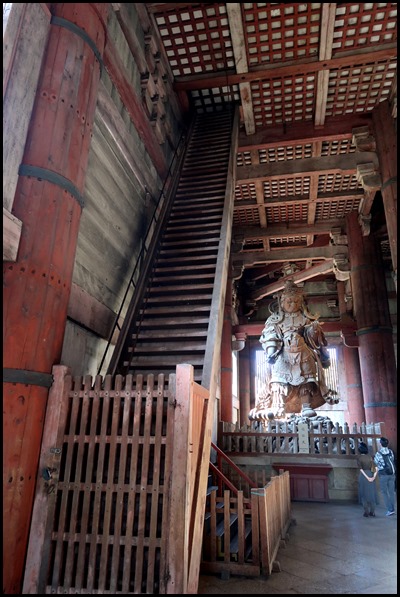  Further on, I loved the loft
ladder which was next to an angry looking chap called Kōmokuten, which literally
means Wide Eyed or Expansive Vision. Kōmokuten sees through
evil, punishes evil, and encourages aspirations for enlightenment. Kōmokuten is
one of the four Shintennō,
a group of fierce-looking guardian deities who protect the four cardinal
directions of Buddha’s realm. In artwork, the four are typically placed around
the central deity on Buddhist altars. Kōmokuten protects the western quarter.
Like the other members of the Shintennō
group, Kōmokuten is typically dressed in armour and stands atop a demon
(jaki). I was rather taken by the face looking out from his sporran......
Must make even better use of Bear. Won’t the measurements speak for themselves, no,
yes,
dear.
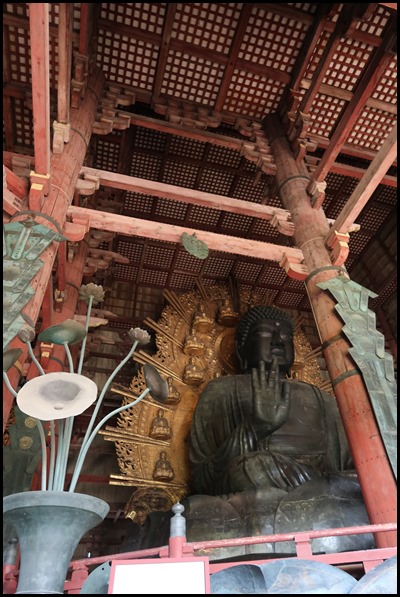 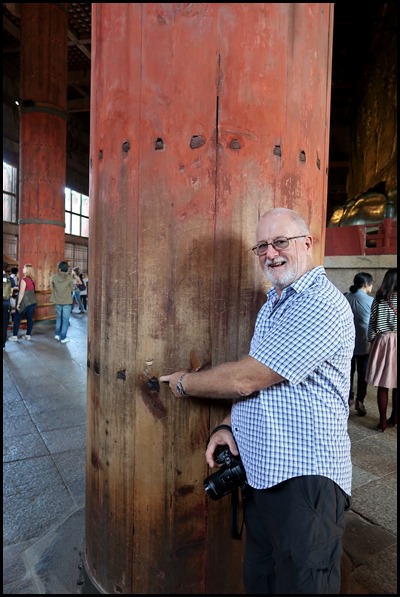 I know, the supports that hold up the roof, loads of them. Finally, we are getting somewhere, Bear looks small pointing out a nut. I feel a strong need to comment. No need. The present-day hall dates to the early 18th century and is only 66% of its former size. Its rebuilding was completed in 1708 but the repair and replacement of its damaged interior statues was still underway in the 1750’s.
The temple gives the following
dimensions for the statue:
· Height: 14.98 m (49 feet 2 inches) · Face: 5.33 m (17 feet 6 inches) · Eyes: 1.02 m (3 feet 4 inches) · Nose: 0.5 m (1 feet 8 inches) · Ears: 2.54 m (8 feet 4 inches)
Buddha’s shoulders are 28 meters across and there are 966 six curls (bronze balls) atop its head. In early August, dozens of young monks neatly dressed in white climb on the Buddha or hang from ropes tied to the ceiling to dust and wipe the huge statue using colourful dusters.
The Birushana Buddha's golden halo is 27 metres (87 feet) in diameter with 16 images each 2.4 m (8 feet) tall.
Using x-rays, a human tooth, along with pearls, mirrors, swords, and jewels were discovered inside of the knee of the Great Buddha; these are believed to be the relics of Emperor Shomu. The statue weighs 500 tonnes (550 short tons).
The Tōdai-ji or Buddha’s hangar does look big in the centre of the map and aerial picture.
According to records kept by Tōdai-ji, more than 2,600,000 people in total helped construct the Great Buddha and its Hall; contributing rice, wood, metal, cloth, or labour; with 350,000 working directly on the statue's construction. The 16 metres (52 feet) high statue was built through eight castings over three years, the head and neck being cast together as a separate element. The making of the statue was started first in Shigaraki. After enduring multiple fires and earthquakes, the construction was eventually resumed in Nara in 745, and the Buddha was finally completed in 751. A year later, in 752, the eye-opening ceremony was held with an attendance of 10,000 monks and 4,000 dancers to celebrate the completion of the Buddha. The Indian priest Bodhisena performed the eye-opening for Emperor Shōmu. The project nearly bankrupted Japan's economy, consuming most of the available bronze of the time; the gold was entirely imported. 48 lacquered cinnabar pillars, 1.5 metres in diameter and 30 metres long, support the blue tiled roof of the Daibutsu-den. We bade Big Buddha ‘farewell’ and found another friend of his just outside the main door.
Binzuru (Pindola Bharadvaja) is wooden, made in the Edo Period in the 18th century. Pindola was one of the sixteen arahats, who were disciples of the Buddha. Pindola is said to have excelled in the mastery of occult powers. It is commonly believed in Japan that when a person rubs a part of the image of Binzuru and then rubs the corresponding part of his own body, his ailment there will disappear. Let’s just say the bit we could have done with rubbing was out of reach and we’ll leave it at that.
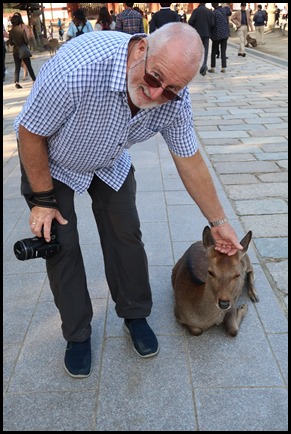 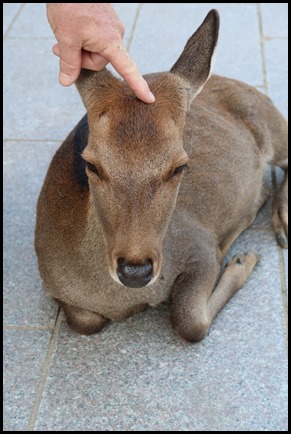 
This contented little Sika deer enjoyed a fuss from ‘is nibs, posed without movement when the trigger finger came out and nary batted an eye when his ear was used.
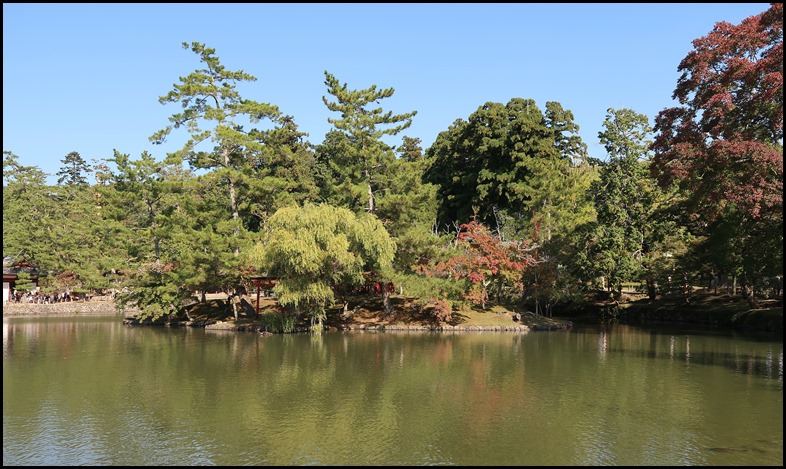
We bimbled around the lake, complete with koi and turtles for a while, stroked a few more deer, then headed back to town. ALL IN ALL
SPLENDID, IMPRESSIVE AND HUGE
THE BIG GUY IS PRETTY
SPECTACULAR |
